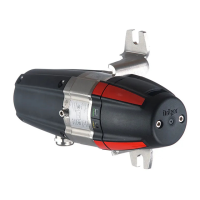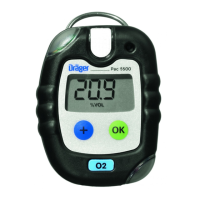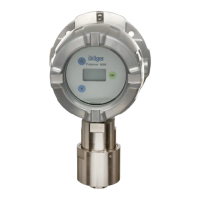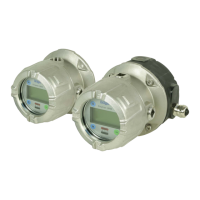45
Operational Characteristics
Operational Characteristics
Commissioning
The Dräger PIR 7000 / Dräger PIR 7200 gas transmitter is either set on delivery in
accordance to the details in the table on page 63 and page 64 or is built-to-order. The
essential settings of this configuration are specified on the configuration label on the device
or on the configuration certificate provided with the device (see page 8).
The device has been factory-calibrated, so after finishing the electrical and mechanical
installation, the device is ready to operate.
● To avoid false alarms, the alarm activation in the central device has to be disabled.
● Supply the system with power. The gas transmitter runs an internal self-test during which
the status indicator's lights flash alternately for a short time. During the first warm-up phase
of 60 seconds, the green status light is on and the yellow status light flashes. Operation
then subsequently begins using the configuration set on delivery.
● We recommend checking if the factory-preset calibration and configuration match with the
intended use of the gas transmitter. Due to national regulations, it may be necessary to run
a calibration of the zero-point and the sensitivity (span).
● After installation, Dräger Safety recommends checking the measured value output within
the configured measuring range (to the full-scale deflection) as well as checking if all
relevant alarms are triggered.
● Enable the alarm activation in the central device to put the system back to normal operating
mode.
— Wait for warm-up time to end.
The gas transmitter distinguishes between two warm-up phases:
Warm-up phase 1: Duration: 60 seconds. Green status light on, yellow status light flashes.
The gas transmitter is in maintenance mode and provides the configured
maintenance signal. No digital measured value is output via the serial
interface or the HART
®
interface.
Warm-up phase 2: Duration: 180 minutes. Green status light on. Gas transmitter is ready for
use. A corresponding digital warning is output via the serial and the
HART
®
interface. When warm-up phase 2 is finished, the warm-up phase
of the gas transmitter is typically completed. The gas transmitter then
reaches the specifications stated in the “Performance Characteristics
(typical values)” on page 73.

